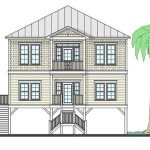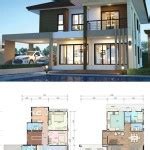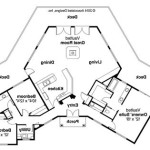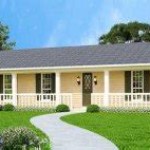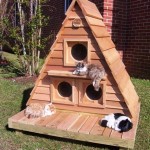A-frame house plans are architectural blueprints that detail the design and construction of a house with a distinctive A-shaped roof. This type of roof, characterized by two triangular sides that meet at a ridgeline, provides a unique and visually striking appearance to the building.
A-frame houses have gained popularity over the years due to their efficient use of space, natural lighting, and rustic charm. They are often constructed with large windows and skylights that allow for ample sunlight, creating a bright and airy living environment. The open floor plan, with minimal interior walls, further enhances the feeling of spaciousness.
Moving into the main body of this article, we will delve deeper into the advantages and considerations associated with A-frame house plans, exploring their design elements, construction techniques, and various applications.
A-frame house plans offer several advantages, including:
- Efficient use of space
- Abundant natural lighting
- Unique and striking appearance
- Open and airy living environment
- Durability in various climates
- Cost-effectiveness
- Easy maintenance
- Adaptability to different terrains
- Environmentally friendly design
- High resale value
It is important to note that these plans also have certain limitations and considerations to keep in mind during the design and construction process.
Efficient use of space
A-frame house plans are renowned for their efficient use of space, maximizing the available square footage and creating a sense of spaciousness.
- Open floor plan: A-frame houses typically feature an open floor plan, with minimal interior walls dividing the living spaces. This design allows for a free flow of movement and interaction between different areas of the house, creating a more spacious and cohesive living environment.
- High ceilings and vaulted spaces: The A-shaped roofline results in high ceilings and vaulted spaces, which further enhance the feeling of spaciousness. These vaulted ceilings can also be utilized to create lofts or mezzanines, providing additional living or storage space without significantly increasing the footprint of the house.
- Multi-purpose spaces: A-frame houses often incorporate multi-purpose spaces that serve multiple functions. For example, the living room can also be used as a dining area, and the loft can be used as a guest room or home office. This efficient use of space allows for a more flexible and adaptable living environment.
- Compact footprint: Despite their spacious interiors, A-frame houses often have a relatively compact footprint. This makes them suitable for smaller building lots or areas with limited space.
Overall, the efficient use of space in A-frame house plans contributes to their overall livability, comfort, and functionality.
Abundant natural lighting
A-frame house plans are designed to maximize natural lighting, creating a bright and airy living environment. The following factors contribute to the abundance of natural light in these homes:
Large windows and skylights: A-frame houses typically feature large windows and skylights strategically placed to capture natural light from multiple angles. These windows often extend from floor to ceiling, allowing for unobstructed views of the surrounding landscape and providing ample daylight throughout the day.
Open floor plan: The open floor plan of A-frame houses allows natural light to penetrate deep into the interior spaces. With minimal interior walls, light can easily flow from one area to another, creating a well-lit and cohesive living environment.
High ceilings and vaulted spaces: The high ceilings and vaulted spaces characteristic of A-frame houses further enhance the distribution of natural light. These architectural features allow light to bounce off surfaces and illuminate even the corners of the house.
Orientation: A-frame houses are often oriented to take advantage of natural sunlight. The large windows and skylights are typically positioned to face south, allowing for maximum exposure to the sun’s rays during the day.
The abundant natural lighting in A-frame house plans not only creates a more inviting and cheerful living environment but also offers several benefits, including:
- Reduced energy consumption: Natural light can significantly reduce the need for artificial lighting, leading to lower energy consumption and cost savings.
- Improved mood and well-being: Exposure to natural light has been linked to improved mood, reduced stress levels, and increased productivity.
- Enhanced sleep quality: Natural light helps regulate the body’s circadian rhythm, promoting better sleep patterns and overall well-being.
- Health benefits: Natural light contains vitamin D, which is essential for bone health and immune function.
Unique and striking appearance
A-frame house plans are renowned for their unique and striking appearance, which sets them apart from traditional architectural styles. This distinctive design not only enhances the aesthetic appeal of the home but also contributes to its overall functionality and livability.
- A-shaped roof: The most defining feature of A-frame house plans is their A-shaped roof, which consists of two triangular sides that meet at a central ridgeline. This roofline creates a dramatic and visually appealing silhouette, making the house stand out from its surroundings.
- Large windows and skylights: A-frame houses often incorporate large windows and skylights into their design. These expansive windows not only provide ample natural lighting but also offer panoramic views of the surrounding landscape, creating a strong connection between the indoors and outdoors.
- Open floor plan: The open floor plan of A-frame houses contributes to their unique appearance. With minimal interior walls, the living spaces flow seamlessly into one another, creating a spacious and loft-like feel.
- Exterior materials: A-frame houses can be constructed using a variety of exterior materials, including wood, stone, and metal. The choice of materials can further enhance the unique appearance of the home, allowing it to blend harmoniously with its surroundings or make a bold statement.
The unique and striking appearance of A-frame house plans makes them a popular choice for homeowners seeking a distinctive and visually appealing home design.
Open and airy living environment
A-frame house plans are designed to create an open and airy living environment, characterized by spaciousness, natural light, and a seamless flow between indoor and outdoor spaces.
High ceilings and vaulted spaces: The A-shaped roofline of A-frame houses results in high ceilings and vaulted spaces, which contribute significantly to the feeling of spaciousness and airiness. These vaulted ceilings allow for ample vertical space, creating a sense of grandeur and openness. The high ceilings also allow for the installation of large windows and skylights, further enhancing the natural lighting and creating a bright and airy atmosphere.
Open floor plan: A-frame house plans typically incorporate an open floor plan, with minimal interior walls dividing the living spaces. This design allows for a free flow of movement and interaction between different areas of the house, creating a more spacious and cohesive living environment. The open floor plan also maximizes natural light penetration, as light can easily flow from one area to another.
Large windows and skylights: A-frame houses often feature large windows and skylights strategically placed to capture natural light from multiple angles. These windows often extend from floor to ceiling, allowing for unobstructed views of the surrounding landscape and providing ample daylight throughout the day. The large windows and skylights not only create a bright and airy living environment but also offer a strong connection to the outdoors, blurring the boundaries between the interior and exterior spaces.
The open and airy living environment in A-frame house plans promotes a sense of well-being and comfort, making them ideal for those seeking a spacious, light-filled, and connected living space.
Durability in various climates
A-frame house plans are designed to withstand a variety of climatic conditions, making them suitable for construction in different geographical locations. The durability of these homes is attributed to several key factors:
- Sturdy structural design: A-frame houses are known for their inherent structural stability. The A-shaped roof, with its triangular shape, provides excellent resistance to wind and snow loads. The use of strong and durable building materials, such as timber or steel, further enhances the structural integrity of these homes, ensuring their longevity in various climates.
- Durable roofing materials: A-frame houses typically utilize durable roofing materials, such as asphalt shingles, metal roofing, or tiles. These materials are designed to withstand harsh weather conditions, including strong winds, heavy rain, and snowfall. Proper installation and regular maintenance of the roof are crucial to ensure the long-term durability of the home.
- Resistance to moisture and decay: A-frame houses can be constructed with materials and techniques that resist moisture and decay. Pressure-treated lumber, moisture-resistant drywall, and proper ventilation help protect the home from moisture damage, rot, and mold growth. Additionally, the high ceilings and vaulted spaces promote air circulation, reducing the risk of moisture accumulation.
- Adaptability to different terrains: A-frame house plans can be adapted to different terrains and soil conditions. The use of piers or pilings can elevate the home in areas prone to flooding or unstable soil. Proper drainage systems and landscaping can further protect the home from water damage and erosion.
The durability of A-frame house plans in various climates not only ensures the longevity of the home but also provides peace of mind to homeowners, knowing that their property can withstand the elements and provide a safe and comfortable living environment for years to come.
Cost-effectiveness
A-frame house plans are renowned for their cost-effectiveness, offering several advantages that can help homeowners save money on construction and maintenance costs.
- Efficient use of materials: The A-shaped roof design of A-frame houses allows for efficient use of building materials. The triangular shape of the roof minimizes material waste and reduces the overall cost of construction compared to traditional roof designs.
- Simplified construction methods: A-frame houses often employ simplified construction methods, such as post-and-beam framing or prefabricated panels. These methods can reduce labor costs and construction time, further contributing to the cost-effectiveness of these homes.
- Energy efficiency: The high ceilings and vaulted spaces characteristic of A-frame houses promote natural air circulation, reducing the need for artificial heating and cooling systems. Additionally, the large windows and skylights allow for ample natural lighting, reducing energy consumption for artificial lighting.
- Low maintenance costs: A-frame houses typically have lower maintenance costs compared to other types of homes. The durable roofing materials and sturdy structural design ensure longevity and reduce the need for frequent repairs or replacements. Additionally, the simple design and lack of complex architectural details minimize maintenance requirements.
The cost-effectiveness of A-frame house plans not only makes them an attractive option for budget-conscious homeowners but also provides long-term savings on energy and maintenance costs, contributing to the overall value and affordability of these homes.
Easy maintenance
A-frame house plans are designed with easy maintenance in mind, offering several advantages that can save homeowners time and effort in upkeep and repairs.
- Durable exterior materials: A-frame houses often utilize durable exterior materials, such as metal roofing, fiber cement siding, and composite decking. These materials are resistant to rot, moisture, and pests, requiring minimal maintenance and lasting longer than traditional materials like wood.
- Low-maintenance landscaping: The A-shaped roof design of A-frame houses helps shed water and debris, reducing the need for frequent gutter cleaning and roof maintenance. Additionally, the lack of complex rooflines and dormers simplifies exterior painting and repairs.
- Easy-to-clean interiors: A-frame houses typically have open floor plans with minimal interior walls, making it easier to clean and maintain. The high ceilings and vaulted spaces allow for the use of dust-collecting fans to keep surfaces free of dust and debris.
- Reduced energy maintenance: The energy-efficient design of A-frame houses can reduce maintenance costs associated with heating and cooling systems. The high ceilings and vaulted spaces promote natural air circulation, while the large windows and skylights allow for ample natural lighting, reducing the reliance on artificial systems and lowering energy bills.
The easy maintenance features of A-frame house plans not only save homeowners time and effort in upkeep but also contribute to the long-term value and affordability of these homes.
Adaptability to different terrains
A-frame house plans are designed to be adaptable to different terrains and soil conditions, allowing for construction on a variety of landscapes. This adaptability is achieved through several key features:
- Elevated design: A-frame houses can be elevated on piers or pilings to protect them from flooding or unstable soil conditions. This elevated design is particularly useful in areas with high water tables, floodplains, or uneven terrain.
- Flexible foundation options: A-frame houses can be built on different types of foundations, including concrete slabs, crawl spaces, and basements. This flexibility allows them to adapt to various soil conditions and building codes.
- Sloped roof design: The A-shaped roof design of these homes sheds water and snow effectively, making them suitable for areas with heavy precipitation or snowfall. The steep roof pitch helps prevent water accumulation and reduces the risk of leaks or damage.
- Terraced construction: For sloped or uneven terrain, A-frame houses can be built on terraced levels. This terraced construction allows for better site utilization and creates unique and visually interesting living spaces.
The adaptability of A-frame house plans to different terrains makes them a versatile housing option, suitable for various locations and landscapes. They offer homeowners the flexibility to build on challenging or unique sites, maximizing the potential of their land and creating homes that are in harmony with their surroundings.
Environmentally friendly design
A-frame house plans incorporate environmentally friendly design principles, minimizing their impact on the natural environment and promoting sustainability. These eco-conscious features contribute to a healthier living environment and reduce the carbon footprint of the home.
- Energy efficiency: A-frame houses are designed to be energy-efficient, reducing their reliance on non-renewable energy sources. The high ceilings and vaulted spaces facilitate natural air circulation, minimizing the need for artificial heating and cooling. Large windows and skylights allow for ample natural lighting, reducing energy consumption for artificial lighting.
- Sustainable materials: A-frame houses often utilize sustainable building materials, such as reclaimed wood, recycled steel, and low-VOC (volatile organic compound) paints and finishes. These materials minimize the environmental impact of the home’s construction and contribute to improved indoor air quality.
- Water conservation: A-frame house plans can incorporate water-saving fixtures and appliances, such as low-flow toilets, showerheads, and faucets. Rainwater harvesting systems can also be implemented to collect and store rainwater for non-potable uses, such as irrigation and washing.
- Reduced waste: The efficient use of materials and simplified construction methods employed in A-frame house plans minimize waste during construction. Additionally, features like composting systems and recycling programs can further reduce the environmental impact of the home.
The environmentally friendly design of A-frame house plans not only reduces their ecological footprint but also creates a healthier and more sustainable living environment for occupants.
High resale value
A-frame house plans offer a high resale value due to several factors that contribute to their enduring popularity and desirability in the real estate market.
Unique and iconic design: The distinctive A-shaped roofline and open floor plan of A-frame houses set them apart from traditional architectural styles, creating a unique and visually appealing aesthetic. This unique design not only attracts buyers seeking a home with character and charm but also ensures that A-frame houses remain in high demand, as they are not easily replicated by other home designs.
Adaptability and versatility: A-frame house plans offer a high degree of adaptability and versatility, allowing them to be customized to suit the needs of a wide range of buyers. The open floor plan can be easily reconfigured to accommodate changing family dynamics or lifestyle preferences. Additionally, A-frame houses can be built on various types of terrain and in different climates, making them appealing to a broad pool of potential buyers.
Energy efficiency and sustainability: The energy-efficient features incorporated into A-frame house plans, such as high ceilings, large windows for natural lighting, and sustainable building materials, are becoming increasingly important to homebuyers. These features not only reduce energy consumption and utility costs but also contribute to a healthier and more comfortable living environment, making A-frame houses more desirable in the resale market.
Historical significance and cultural appeal: A-frame house plans have a rich historical significance and cultural appeal, particularly in certain regions where they have become iconic symbols of a particular era or architectural style. This historical significance and cultural appeal can add to the desirability and resale value of A-frame houses, especially among buyers who appreciate unique and architecturally significant properties.









Related Posts

